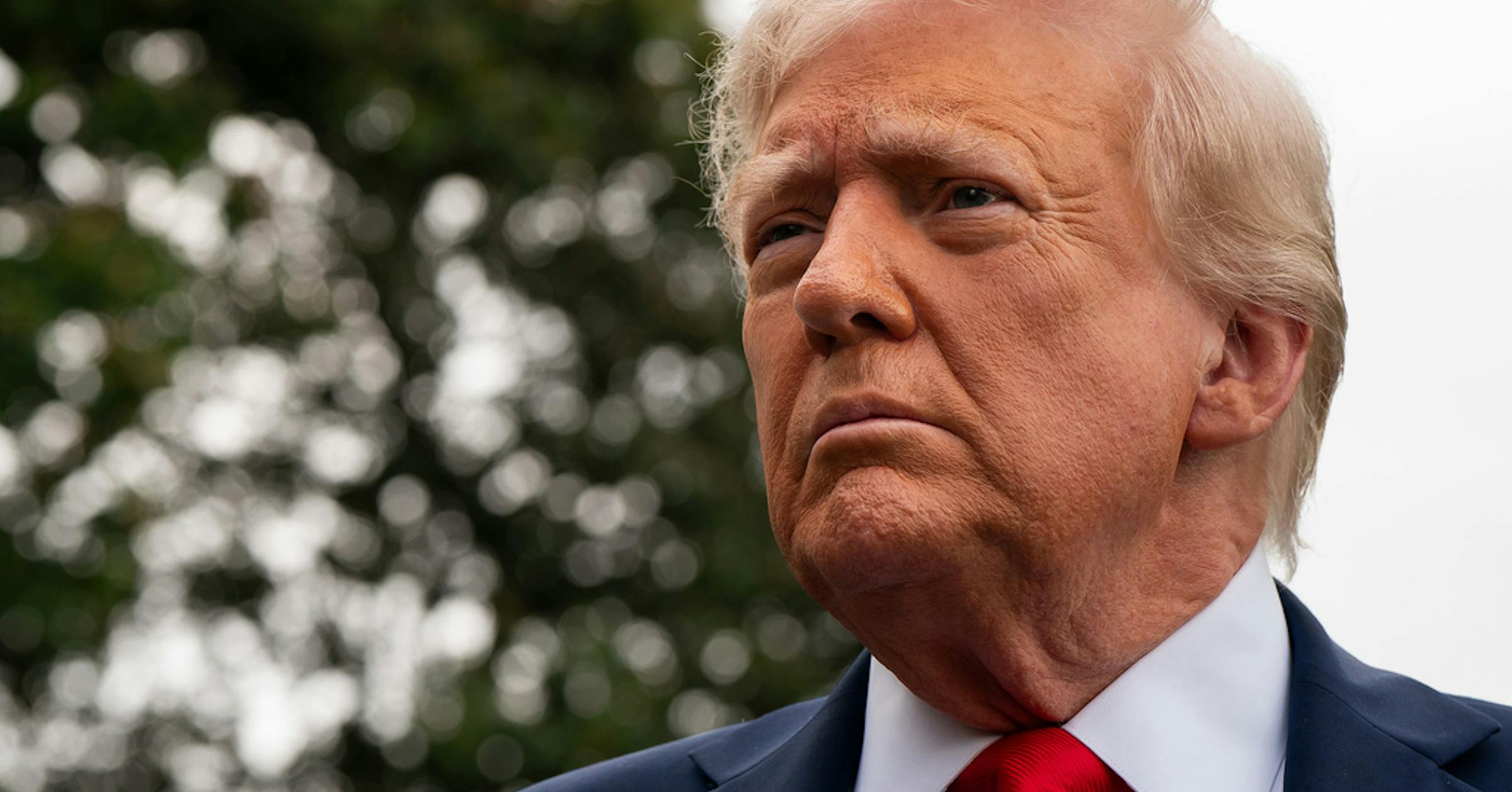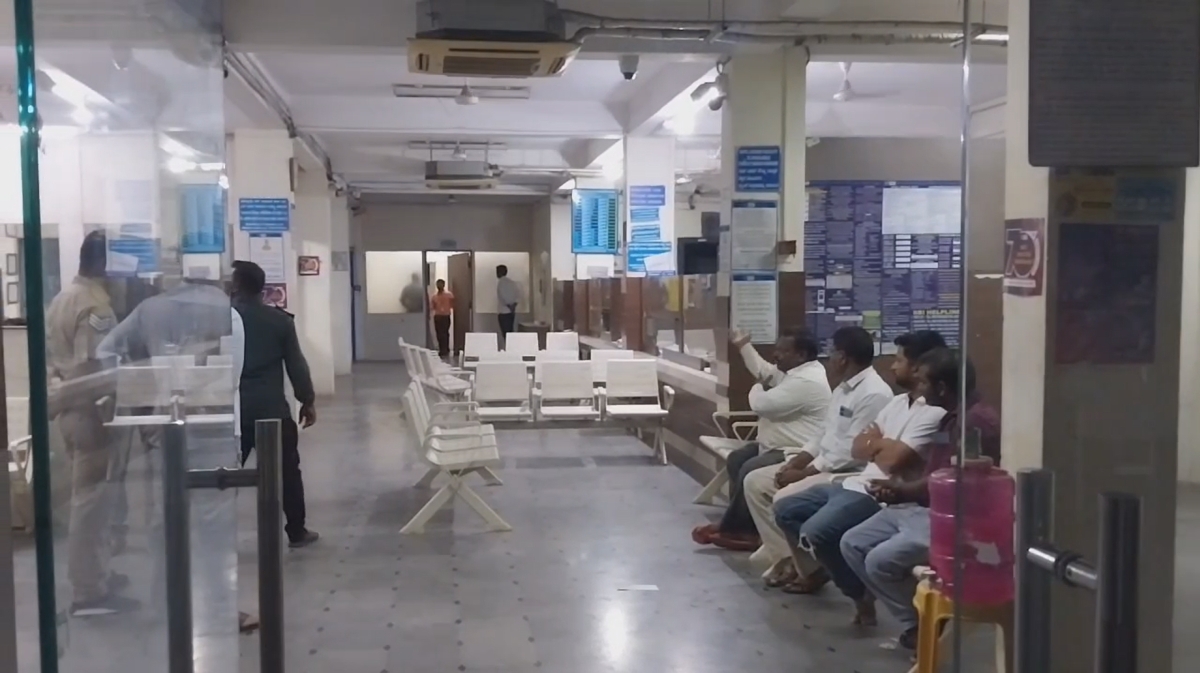
Now, Washington is speeding toward a federal shutdown, posing yet another test to an economy under increasing strain eight months into Trump’s second term. If a partisan logjam brings federal agencies to a screeching and sustained halt in a matter of days, the result could be another round of pain for U.S. consumers and businesses.
“The economy is quite vulnerable,” said Mark Zandi, chief economist at Moody’s Analytics. “In a more resilient time, I think even a prolonged shutdown wouldn’t derail the economy. But in the current economy, it could very well be the thing that pushes us under.”
A shutdown will occur next week unless Congress and the White House can strike a deal before midnight Sept. 30, the end of the fiscal year. Absent a last-minute compromise, federal funding is set to lapse, carrying wide-ranging implications that underscore the myriad ways that Washington touches Americans’ daily lives.
Historically, these interruptions have shuttered national parks and museums, halted some federal food safety inspections and cut off services to small businesses, preventing them from obtaining some government loans or permits. A shutdown does not affect Social Security or Medicare, but it has previously prevented older Americans from having access to some related services, such as obtaining new benefit cards.
This year, the loss of funding could also disrupt the federal Women, Infants and Children program, which helps provide groceries to low-income families. The initiative would not have enough money left to accept new applicants starting Oct. 1, according to a White House official, who spoke on the condition of anonymity to describe internal budget documents. The administration previously asked Congress to approve additional funds for the benefits, known as WIC.
For millions of federal workers, a shutdown carries direct hardships, especially if it is prolonged. These employees, including military personnel, are deprived of their pay while funding is in jeopardy, though some are forced to report for duty in the meantime. The law does guarantee that they will receive back pay, but only after Congress can clinch a deal, meaning some could be without steady income for weeks.
The government is no stranger to fast-approaching fiscal deadlines, which can often serve as motivation for Democrats and Republicans to strike a grand bargain. But as of Wednesday, the two sides did not even appear to be talking, raising the odds that a vast swath of Washington could shutter soon for an extended period.
If that occurs, the Trump administration does have some discretion under law to determine which government functions and employees are so vital that they must continue even during the closure. But some agencies have not published their latest contingency plans, and others have removed the documents from the internet entirely, making it difficult to predict any economic disruptions that might arise if funding runs out next week.
Most government shutdowns are resolved in a matter of days, sparing the economy from significant disruption. But the current fight could touch off a more protracted interruption, given that Trump recently refused to even meet with Democratic leaders. House Republicans adopted a measure this month that would temporarily fund the government into November, but Senate Democrats blocked that approach as they looked to extend a set of health care subsidies expiring this year.
As a general rule, every week that federal operations are shuttered can shave off about one-tenth of a percentage point from the nation’s total economic output that quarter. The longer that federal funding remains blocked, the greater the consequences and the more difficult it is for the economy to make up for lost ground in future months.
The risks were laid bare in Trump’s first term, when part of the federal government shuttered for a five-week period that ended in January 2019. That shutdown, the longest in history, shaved off 0.1 percentage points from the nation’s gross domestic product in the final quarter of 2018 and another 0.3 percentage points in the first quarter of the following year, according to an analysis this week by economists at Wells Fargo.
The lapse in funding did not affect the entire federal government at the time. The administration took steps — later found to have violated the law — to keep some programs running anyway. And the hit to the economy, which would recover from its mild losses, did not ameliorate the other ways that the closure might have harmed individual Americans. That included federal workers, who saw significant interruptions to their pay.
“You can only go so long with IOUs,” said Sam Berger, a senior fellow on the federal fiscal policy team at the Center on Budget and Policy Priorities, a left-leaning group. “You can’t pay a mortgage. You can’t pay for your groceries. That has a real impact.”
Ryan Sweet, chief U.S. economist at Oxford Economics, said that a sharp and prolonged drop-off in federal spending also tended to have a ripple effect, eventually curtailing “consumer spending, private contractors and other business activity.” Firms in particular face risks if they cannot obtain federal loans, one of many consequences of a shutdown that he described as difficult to “disentangle” from the data.
This year, though, a federal shutdown appears poised to arrive at a moment of great economic uncertainty, potentially worsening the impact if the stalemate drags on for weeks or months.
Punishing tariffs now apply to many of the world’s exports to the United States, with more duties still to come, as Trump forges ahead with a global trade war that is facing a serious legal challenge in the Supreme Court. Economists once feared that these tariffs could plunge the nation into a recession, and while such a doomsday has not arrived, foreign goods have still become more expensive as U.S. firms run out of ways to absorb the costs of the president’s trade brinkmanship.
The labor market has also stalled, adding only 22,000 jobs in August, according to data released this month. The slow growth has occurred in tandem with a related push by Trump to crack down on immigration and conduct mass deportations, which has shrank the pool of available workers.
Jerome Powell, the chair of the Federal Reserve, described the overall economy Tuesday as “challenging,” underscoring the ways that the president’s agenda has vexed the nation’s central bank on the heels of its first interest rate cut in months.
“I would say, not all government shutdowns are created equal, and depending on how resilient the economy is, the shock from a government shutdown may be greater or lesser,” said Gregory Daco, chief economist at EY-Parthenon. “And right now, what we’re seeing is an economy that’s subject to a number of conflicting headwinds and tailwinds, but it seems like the economy is losing momentum.”
Michael R. Strain, a conservative economist at the American Enterprise Institute, said a prolonged breakdown in Washington could also weigh on financial markets. He pointed to the bond market, where investors this year have demanded more favorable terms on government debt, suggesting persistent unease with the nation’s political and fiscal trajectory.
“The longer a shutdown lasts, the more it calls into question some of the basics around the government’s ability to function,” Strain said. “The market may be pretty forgiving of a short-term shutdown, but I think the longer it goes, the greater the concern about the stability of the U.S. government.”
But the exact toll on the economy would not be known for some time. The Bureau of Labor Statistics, which tracks inflation, growth and other key economic indicators, could also have to disable its operations, stalling key data until Congress can broker a deal.
When President Donald Trump’s administration announced it would repurpose an old, generic drug as a new treatment for autism, it came as a surprise to many experts — including the physician who suggested the idea to the nation’s top health officials.



